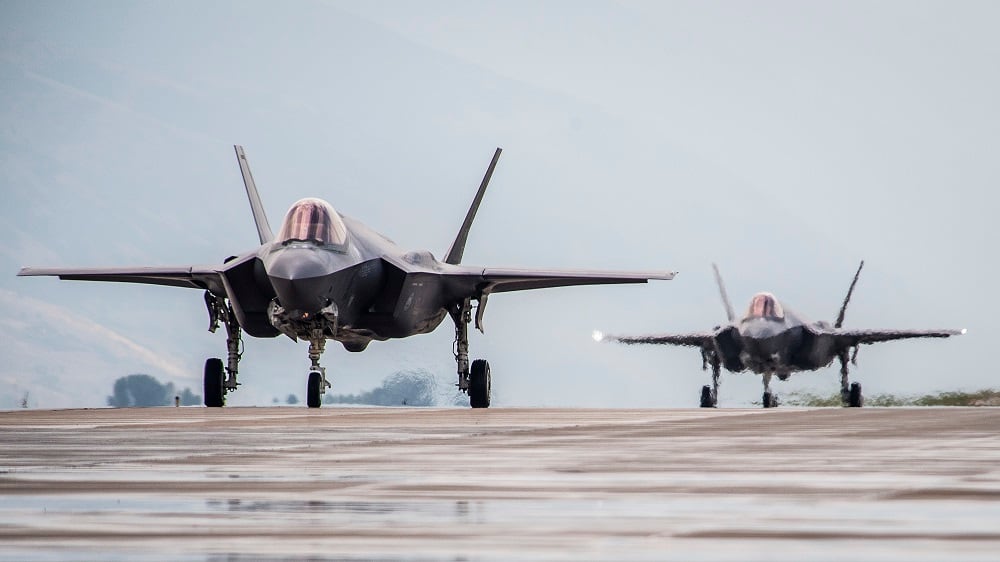WASHINGTON — The Senate finalized a nearly $700 billion defense authorization bill on Thursday, setting the stage for a 2.4 percent pay raise for troops next year, a boost in military end strength and a build-up in military equipment and readiness.
Whether the military will have that much money to spend is still up for debate. The authorization bill sets policy priorities and spending parameters for military funding for fiscal 2018, but appropriators still must allot the money to the Defense Department before they can move ahead.
That process is expected to take several more weeks. The authorization bill approved Thursday in a quiet, pre-holiday vote is already $85 billion above spending caps mandated by federal law for fiscal 2018. Appropriators are still considering a boost in that limit of about $55 billion, similar to the president’s request earlier this year.
But Senate Armed Services Committee Chairman John McCain, R-Ariz., called the authorization bill’s passage “the baseline for our leaders” as appropriations negotiations continue.
Lawmakers who negotiated the compromise bill called it a readiness-focused plan, one that sets the stage for future military build-ups promised by President Donald Trump. It includes about $634 billion in base defense spending and another nearly $66 billion for overseas contingency operations.
It also includes a wide range of policy items that will directly affect rank-and-file troops and service leaders:
A 2.4 percent pay raise: The pay boost for 2018, which matches the expected growth in private-sector wages for next year, is the largest troops have seen since 2010. It translates into about a $680 annual boost from 2017 pay for younger enlisted troops, and about $1,080 a year for more senior enlisted and junior officers. A mid-career officer will see almost $2,000 a year extra under the plan.
More troops: The authorization bill backs plans to add 8,500 new soldiers (7,500 in active duty, 500 each in the Guard and Reserve), 5,000 new sailors (4,000 in active duty, 1,000 in the Reserve), 5,800 new airmen (4,100 in active duty, 900 in the Guard, 800 in the Reserve) and 1,000 new active-duty Marines.
More aircraft: Lawmakers provided authorization for 90 new F-35 Joint Strike Fighters, 24 new F/A-18 Hornets, 12 new V-22 Ospreys and 71 AH-64E helicopters. All of those are aobve White House and Pentagon equipment requests.
More ground combat vehicles: The bill matches White House requests for joint light tactical vehicles and armored multipurpose vehicles, but adds wider authority to purchase more Abrams Tank upgrades (85 tanks) and Bradley Fighting Vehicles (93 vehicles) than the administration had sought.
More ships: Naval officials had pushed for the power to purchase one new Littoral Combat Ship. The authorization bill money includes three, and an extra DDG-51 destroyer above the two requested by military leaders.
New revenge porn rules: In response to controversies earlier this year, the measure includes language making “non-consensual sharing of intimate images” a crime. It also expands support services for victims of military sexual assault.
Expanded health care services: The measure makes more reservists eligible for Tricare after mobilization. And it also requires new mental health assessments and physical exams for reservists before their orders expire, in an effort to better identify their service-connected injuries.
New online purchasing power: Dubbed the “Amazon amendment,” the authorization bill contains a provision allowing defense officials to create an online portal for quick purchase of commercial products such as office supplies or furniture.
The authorization bill faced little opposition in the House earlier this week and no opposition on the Senate floor. That’s in large part because negotiators dropped more controversial items before issuing their final draft.
Among the proposals dropped from the final measure:
No new Space Corps: House lawmakers had pushed for a massive reorganization of military space activities, but plans for a separate service focused on the topic were scrapped. Instead, the bill includes a host of leadership and procurement reforms aimed at cleaning up those missions.
No new base closing round: Pentagon and White House officials have lobbied lawmakers to close excess military capacity for years. But the idea remains unpopular on Capitol Hill, and is not included in the final draft.
No new rules for housing allowances: Senate planners had floated the idea of cutting back on the basic allowance for housing stipends of dual military couples. But the idea got little support from their House counterparts and was left out of the final authorization agreement.
No new rules on transgender troops: Trump’s public comments suggesting a total ban on transgender individuals from serving in the military have raised concerns among members of Congress, but negotiators left the topic out of this policy measure.
Trump is expected to sign the bill in coming days. Earlier this year, the White House issued a lengthy list of objections to earlier authorization bill drafts, but most of those items were reconciled in the final version.
The new fiscal year started Oct. 1, but federal operations have been continuing without a full fiscal 2018 budget under a budget extension passed by Congress in September. That deal runs out Dec. 8, giving lawmakers a short window when they return from holiday break on Nov. 27 to resolve the ongoing funding controversies or spend another stop-gap measure.
Leo covers Congress, Veterans Affairs and the White House for Military Times. He has covered Washington, D.C. since 2004, focusing on military personnel and veterans policies. His work has earned numerous honors, including a 2009 Polk award, a 2010 National Headliner Award, the IAVA Leadership in Journalism award and the VFW News Media award.




